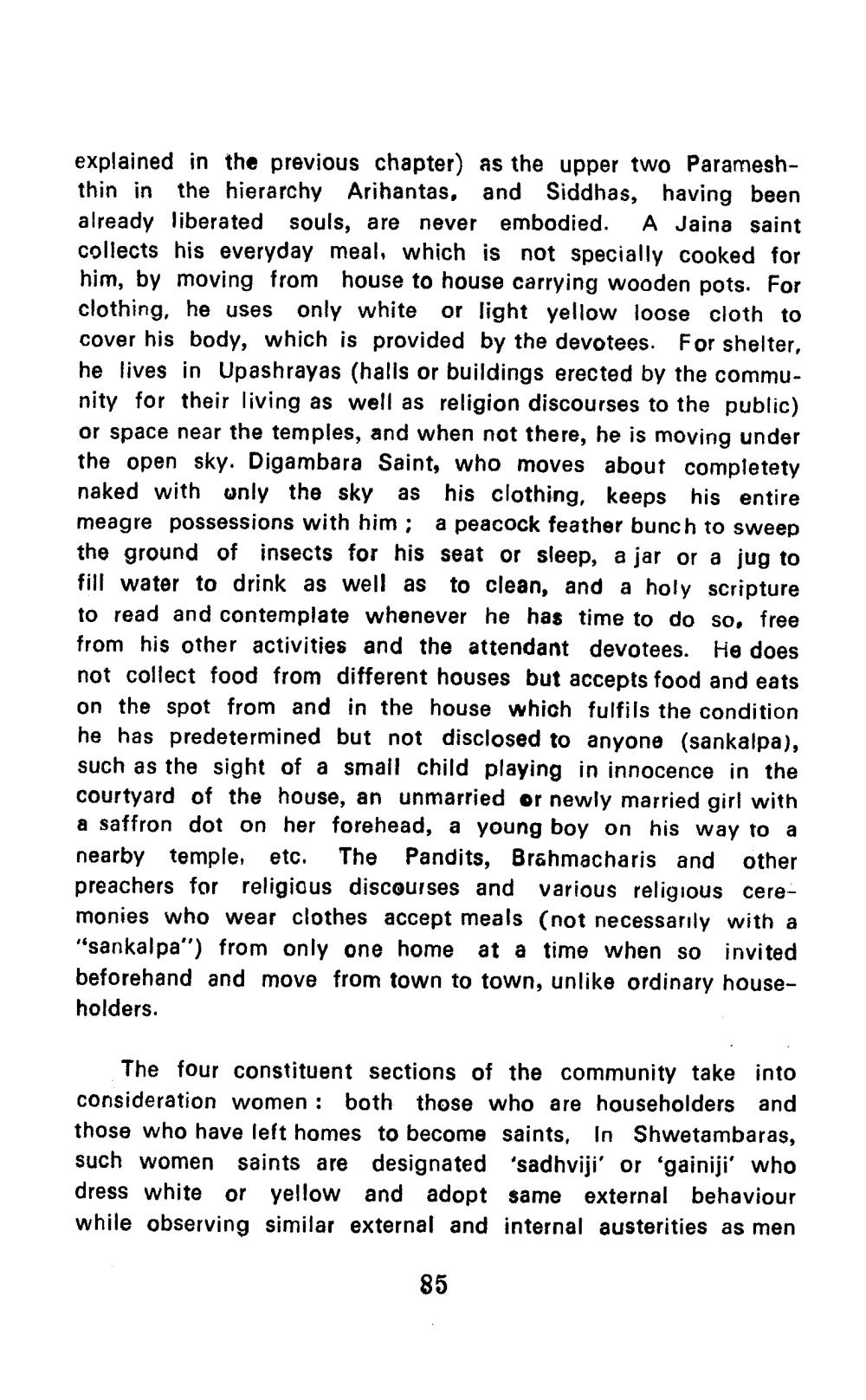________________
explained in the previous chapter) as the upper two Parameshthin in the hierarchy Arihantas, and Siddhas, having been already liberated souls, are never embodied. A Jaina saint collects his everyday meal, which is not specially cooked for him, by moving from house to house carrying wooden pots. For clothing, he uses only white or light yellow loose cloth to cover his body, which is provided by the devotees. For shelter, he lives in Upashrayas (halls or buildings erected by the community for their living as well as religion discourses to the public) or space near the temples, and when not there, he is moving under the open sky. Digambara Saint. who moves about completetv naked with only the sky as his clothing, keeps his entire meagre possessions with him ; a peacock feather bunch to sweep the ground of insects for his seat or sleep, a jar or a jug to fill water to drink as well as to clean, and a holy scripture to read and contemplate whenever he has time to do so, free from his other activities and the attendant devotees. He does not collect food from different houses but accepts food and eats on the spot from and in the house which fulfils the condition he has predetermined but not disclosed to anyone (sankalpa), such as the sight of a small child playing in innocence in the courtyard of the house, an unmarried or newly married girl with a saffron dot on her forehead, a young boy on his way to a nearby temple, etc. The Pandits, Brahmacharis and other preachers for religious discourses and various religious ceremonies who wear clothes accept meals (not necessarily with a "sankalpa") from only one home at a time when so invited beforehand and move from town to town, unlike ordinary householders.
The four constituent sections of the community take into consideration women : both those who are householders and those who have left homes to become saints, In Shwetambaras, such women saints are designated 'sadhviji' or 'gainiji' who dress white or yellow and adopt same external behaviour while observing similar external and internal austerities as men
85




